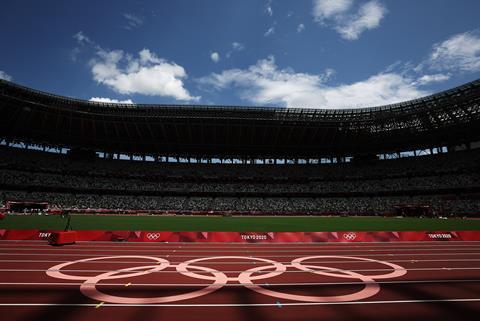Paul Briggs, SVP Europe at Silverpush, looks at possible strategies for brands over a busy summer

Saturday 13th July. To the casual observer, just another day in the calendar. But for diehard sporting fans, this is the starting pistol for the Summer of Sport - a season punctuated with elite competition and mouth watering drama.
Wimbledon’s Centre Court serves up the first pieces of entertainment courtesy of the Singles Finals that weekend. On the 14th, Europe’s finest footballing talent will battle it out in the UEFA Euro 2024 Final. If that wasn’t enough, two weeks later sees the start of the Paris Summer Olympics.
It’s not just spectators in the stands that will be hoping to witness greatness. The eyes of the world will be on each of these sporting events - with television taking centre stage in people’s homes. And as usual, this level of attention will whip brands into a frenzy.
But sports advertising isn’t a level playing field. Today’s viewing experience is fragmented. Linear television, for so long the undisputed champion, is seeing its dominance challenged by Connected TV (CTV) and social media.
Brands that want to emerge from the Summer of Sport with a gold medal have their work cut out. Not only do they need to tap into where these massive audiences are spending their time; they also need to leverage the right creative assets.
Going behind the lines
Free-to-air coverage remains a key cog in the sports broadcasting machine. That being said, the shift to digital channels hasn’t come out of left field.
Streaming services have cemented their position at the heart of the sporting landscape over several years. YouTube seeing a boost of 1.2m subscribers after acquiring the rights to stream the NFL’s Sunday Ticket underscores that this trend is here to stay.
The reality is that fans wanting to truly immerse themselves in their favourite sports are already jumping from platform to platform. More than a third of UK consumers use three or more streaming apps to watch live sports - with the Summer of Sport set to take this to the new heights.
52% of the UK is planning to stream part of the Euros - a 14% increase from the previous tournament. Similarly, the Paris Olympics are set to attract 16% more streamers compared to the 2022 Winter Olympics.
And it’s not just streaming that brands have to factor into the advertising equation. Social media has become a go-to platform for younger audiences to engage with sporting content. According to WARC, 93% of the UK’s 18-24 demographic interact with sports on social media on a weekly basis.
Bottom line: omnichannel strategies have to be part of brands’ advertising playbooks. But just getting your content in front of audiences doesn’t guarantee a first place finish.
Back to the drawing board
Sports fans’ desire for entertainment extends beyond the pitch.
Passive, run-of-the-mill ads simply don’t make an impression on this audience. They crave excitement. They want content that brings them closer to the action, allowing them to connect with their favourite athletes and teams.
Netflix clearly understood the assignment. The streaming platform’s successful foray into sports has been built around water-cooler moments. The winning basket, the last minute overtake - these are the ingredients that have endeared Drive to Survive and The Last Dance with audiences.
Brands can follow the same gameplan with their advertising strategies. Instead of playing it safe, State Farm drafted in Caitlin Clark to promote its insurance packages. The University of Iowa basketball phenomenon quickly proved that she wasn’t just a hit on the court, with her ads being almost 50% more likely to generate engagement versus the company’s regular ads.
Enlisting the help of sporting icons isn’t the only way to capture attention. Gamification enables brands to drive visibility and top-of-mind recall whilst boosting engagement - just ask Paramount+.
The streaming service’s debut at this year’s Super Bowl featured interactive ‘Add to Watchlist’ ads. This wasn’t a Hail Mary attempt to cut through the noise. Rather, it was a considered move to deploy an experimental format to speak directly to sports fans. And judging by the results - the ad’s engagement rate was 6% higher than the industry benchmark - it’s clear Paramount+ hit it out of the park.
The final piece of the engagement puzzle is relevance. Sports fans may be highly engaged, but they don’t want brands peddling niche, off-the-wall products and services that they have no ties with.
Personalisation is the name of the game - and AI-powered contextual targeting can ensure that your advertising goes the distance. A fan watching a Usain Bolt video will be more inclined to engage with an ad for running shoes than an ad for coffee and this is where the technology is really able to shine.
Identifying the type of content that strikes a chord with fans - both in terms of format and tone of voice - is the key to unlocking the engagement sweet spot. Leaning on technology to do the heavy lifting provides your team the licence to do what they do best: produce stunning creative content.
Keep your eye on the ball
It’s less than 100 days until the Summer of Sport kicks off - ample amount of time to perfect your advertising line-up. But with great opportunities comes great responsibility. The onus is on brands to always be on, ready for whatever the competition brings. And that starts by branching out from your comfort zone.
Yes, traditional linear television is still a viable advertising platform. But it doesn’t own a monopoly on the sporting world anymore. Tapping into emerging digital channels and utilising advanced tech-powered targeting will fast-track your brand to the top of the podium.

Paul Briggs is SVP Europe at Silverpush








No comments yet